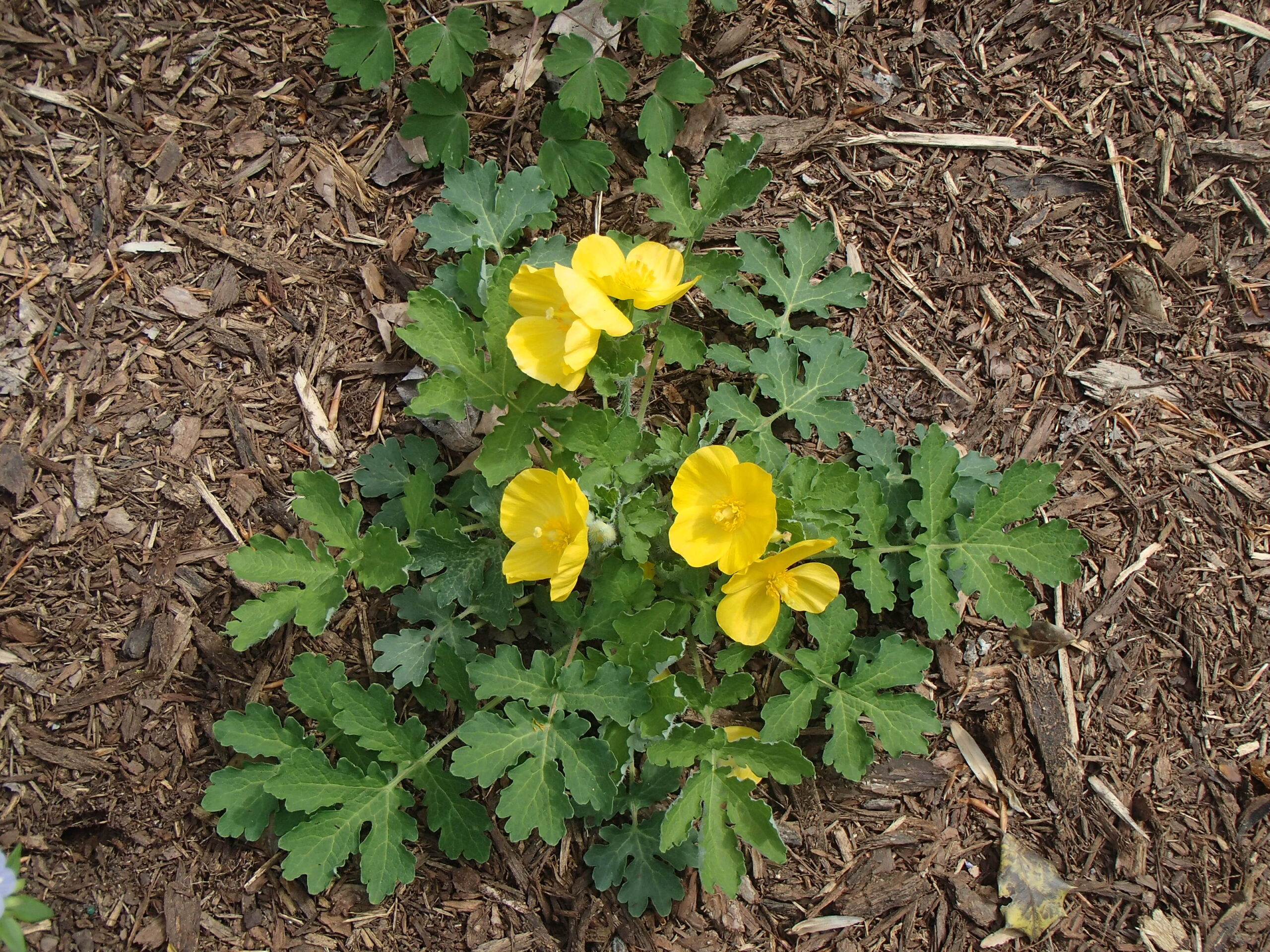Beautiful Wood Poppy is reported in a number of scattered counties centering on Kentucky, Indiana, and Illinois, peripherally in Tennessee and Virginia — close to, but not actually occurring in NC. Named (“diphyllum”) for a pair of deeply lobed leaves just below the 1-2- inch bright yellow, delicate flowers, the Wood Poppy is a delightful, long-lived herbaceous perennial for shade or part sun. The plant is 12-18 inches tall, with distinctive, lobed, silver-backed foliage. It flowers heavily in April to June, and is then valued for its soft, fuzzy buds and dangling seed capsule borne singly or in clusters atop the 12-18-inch stems. This plant is aggressive and will readily spread by seeds in moist, rich soil but goes dormant in summer if allowed to dry out. It is not physically difficult to weed, but sometimes one hesitates to pull out such a little beauty when it shows up where it is not invited, and some prefer to have it in a naturalized area.
NURSERY HOURS
Wednesday: 10-4 Thursday: 10-6 Friday-Saturday: 10-4 Sunday: 12-4
Stylophorum diphyllum

Key Info
Scientific Name: Stylophorum diphyllum (Michx) Nutt.
Common Names: Celandine Poppy, Yellow Wood Poppy
Family Names: Papaveraceae (Poppy Family)
Plant Type: Herbaceous perennial
Flower Color: Bright yellow
Special Characteristics: Rhizomatous
Additional Info
Habit: A relatively long-lived perennial with many lobed basal leaves (not persistent) and a pair of opoosite leaves subtending the terminal flower cluster. Stems and the backsides of mature leaves are fuzzy. The plant has brightly colored latex that stains hands or clothing that is toxic to mamals. The root system consists of a woody caudex with coarse fibrous roots.
Height: 1' to 2'
Spread: 1'
Soil Conditions: Moist, well drained, rich, acidic soils; tolerates lime
Leaves: Pinnately lobed, grey-geen and deeply toothed leaves growing at the base of the stem, with an opposite pair at the base of the flower cluster, all the leaves 4-6 inches long by 4 inches across, silver and pubescent on the backside, with long, pubescent petioles.
Flowers (or reproductive structures: In early spring to early summer, from just above a terminal pair of leaves, flowers appear either singly or in clusters (umbels) of 2-4. They are bright yellow, about 2-inches across, with four delicate, oval petals, two short-lived, hairy sepals, many yellow stamens with golden anthers and a single, stumpy pistil. They are supported by an ascending pedicel, which droops when the seed capsule begins to form. The flowers can self pollinate.
Fruit: Ovoid seed capsules are silvery-green and fuzzy and dangle from the stem. Many dark brown seeds with white elaiosomes ripen in midsummer and are released when ripe.
Natural Distribution: Celandine Poppy is found in high quality habitats (rich deciduous woods, lower slopes of ravines, rocky banks of streams, calcareous bluffs). Uncommon in its range, Wood Poppy is threatened by the invasion of Alliaria petiolata (Garlic Mustard) and Microstegium vimineum (Japanese Stiltgrass).
USDA Hardiness Zone: 4 to 9
USDA Wetland Indicator Status in NC: Not available
Pollination: This plant produces pollen, but no nectar. It is most likely pollinated by various bees, flies and other insects, but in a pinch, Wood Popply can pollinate itself.
Wildlife Connections: Chipmunks, woodland mice and small mammals eat the seed; seeds have elaiasomes attached to them, attracting ants, which aid in the dispersal of the seeds. It seems relatively pest free. Mammalian herbivores avoid the toxic foliage.
Propagation: By division or by seeds; seeds must not be allowed to dry out.
